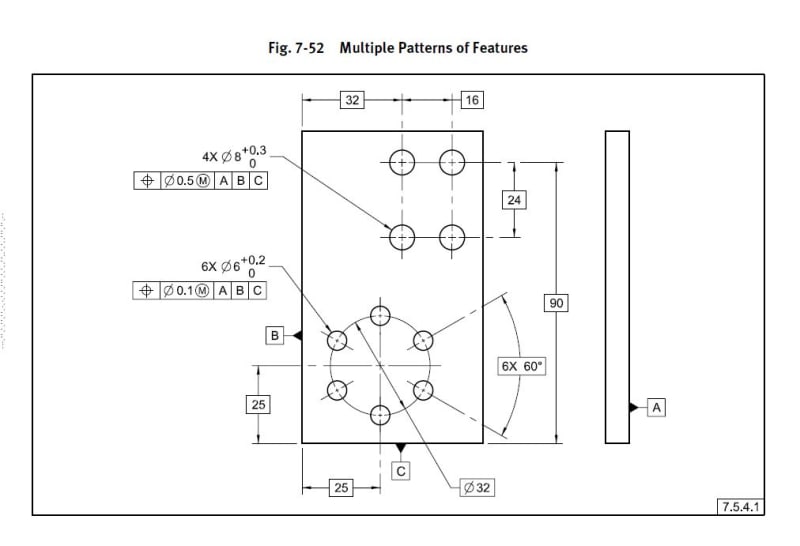sendithard
Industrial
I thought the DRF chapter was hard to get thru, but this position chapter is taxing as hell to read thru.
In the below picture, you see two separate hole patterns. As the diagram shows, it appears this can be one single hard gauge check...But I want to back up for a second...
1st question: Let's assume the bottom bolt hole circle didn't exist, would you then check all the 4 square hole pattern holes individually or would you check them as a pattern? I thought simultaneous meant you check this as a pattern b/c it is not stating 'individually'??? Or is it that the holes are dimensioned from themseleves that it is in essence a simultaneous measurement by default? Just not called a simultaneous b/c it has interrelated dimensions.
2nd question: Since the bolt hole circle has the same Datums we have a simultaneous condition...so could this be created at MMC with a hard gauge I'm assuming?

In the below picture, you see two separate hole patterns. As the diagram shows, it appears this can be one single hard gauge check...But I want to back up for a second...
1st question: Let's assume the bottom bolt hole circle didn't exist, would you then check all the 4 square hole pattern holes individually or would you check them as a pattern? I thought simultaneous meant you check this as a pattern b/c it is not stating 'individually'??? Or is it that the holes are dimensioned from themseleves that it is in essence a simultaneous measurement by default? Just not called a simultaneous b/c it has interrelated dimensions.
2nd question: Since the bolt hole circle has the same Datums we have a simultaneous condition...so could this be created at MMC with a hard gauge I'm assuming?

